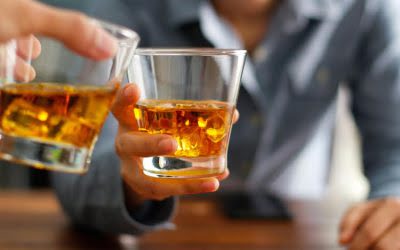External triggers refer to the environmental cues you link to alcohol, including places, times, people, and situations. Internal triggerstypically involve memories, thoughts, emotions, or physical sensations that prompt the urge to drink. The other important aspect of avoiding replacement addictions is to address any underlying mental health problems. Substance use commonly occurs alongside other mental health conditions.
- Coping tips can absolutely offer short-term solutions when you’re trying to cut back on alcohol.
- We all remember our first drink, but what some of us didn’t know then is it would lead to alcohol dependence.
- For more details, you can see my book, The Addicted Brain and How to Break Free.
- Breaking this loop can help a person overcome alcohol cravings and manage their alcohol intake.
- “With these drugs there’s also a risk of developing pancreatitis,” she says.
- But in spite of your goals and no matter how committed you are to changing your habits around drinking, avoiding alcohol might prove a little more difficult than you expected.
This is key to keeping cravings under control, especially when your body is used to using alcohol as a quick form of fuel. Generally, the more alcohol you drink on a regular basis, the longer it takes for cravings to subside. As with external triggers, you may or may not be aware that an internal trigger is what’s behind your urge to drink.
Guide to everything about Naltrexone
As your cravings for alcohol become more manageable, you may decide to try reintroducing situations that previously triggered your temptation to drink. But studies have found that in animals and people, GLP-1 drugs reduce the release of dopamine in this region when you eat something sweet and fatty, or when you consume alcohol. “The drug talks with our brain and says, ‘We’ve had enough food here. So let’s slow down. Let’s have less appetite, let’s have less food. Less alcohol,” says NIDA’s Leggio. If you realize you have a strong craving each time you sit down and turn on the TV after a fight or long day at work, you must combat it by changing your routine. What you could do is when you get home grab a change of clothes and head to the gym and watch TV from the treadmill.

For example, individuals who have grown up in households where alcohol misuse was prevalent may be more susceptible to developing cravings for alcohol themselves. Furthermore, research has shown that alcohol cravings can also be influenced by genetic factors. Certain individuals may have a genetic predisposition to experiencing stronger cravings for alcohol, making it even more challenging to overcome addiction. Alcohol cravings are often a significant obstacle for those seeking to reduce their alcohol consumption or achieve sobriety. These cravings can occur at any time and can be triggered by various factors, such as stress, social situations, or even certain foods. A person who experiences alcohol cravings does not necessarily have alcohol use disorder.
Denial: How it hurts, how it helps, and how to cope
It’s also important to go to the person with the correct information and provide them with details about recovery programs, treatment centers and support programs. This can mean thinking about drinking with others or good times that happened while the person was under the influence of alcohol. If you notice someone romanticizing their alcohol use, it would be a good time to ask them if they need support avoiding their drinking habits.
Others in recovery or professionals who work in addiction understand that you still need support. Medications can sometimes be helpful in both the short term and the long term. Talk to a doctor about the options that are available to and appropriate for you. Other ways to prepare include deciding what approach you plan to use herbs to curb alcohol cravings to overcome your addiction and getting the resources that you need to be successful. Common side effects of Disulfiram include drowsiness, tiredness, headache, skin rash, swollen tongue, metallic taste, numbness of limbs, extreme mood swings, seizures. Absolute abstinence from alcohol is advised while on this medication.
Wegovy works. But here’s what happens if you can’t afford to keep taking the drug
While general guidelines can be helpful, it is important to remember that everyone’s dietary needs may vary. Seeking professional advice from a registered dietitian or nutritionist can provide personalized recommendations tailored to your specific needs and recovery goals. Over time, many people find their cravings easier to control and reduce in strength. During this time, the brain transitions from incentive salience to habit formation.

Typically, the best source to learn behavioral interventions on how to deal with alcohol cravings is in formal substance use disorder therapy. There are numerous different techniques that can be utilized for different individuals to deal with cravings and reduce the risk of relapse. Therapists can instruct individuals in progressive muscle relaxation and diaphragmatic breathing that can be learned rather rapidly, and these can become tools to deal with cravings. Individuals can then focus on the more complicated aspects of cravings, such as learning about how to fight alcohol cravings, using distraction techniques, understanding triggers, etc. Individuals can also benefit from a combination of medication and behavioral interventions to address their cravings.
Unfortunately, relapse is sometimes a part of recovery, but what’s important is how you manage it. If you acknowledge it and immediately seek help, you’ll be OK, but you need a clear understanding of what can happen to you or others when you drink. You’ll tell yourself, “Well, I already had one,” and get in over your head and get into trouble.


